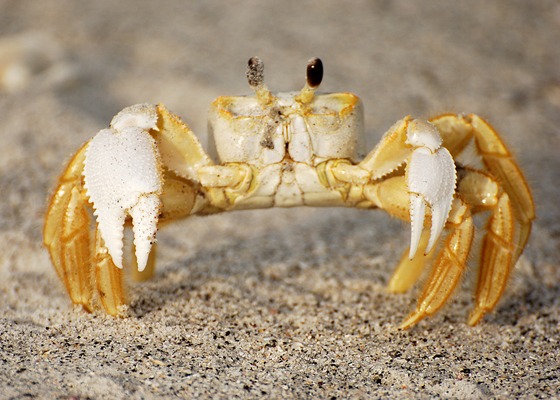By Science Daily, July 18, 2014
 |
| Ghost crab on beach |
The tiny plastic particles polluting our seas are not only orally ingested by marine creatures, but also enter their systems through their gills, according to a new study led by the University of Exeter.
Lead author Dr Andrew Watts of Biosciences at the University of Exeter said: "Many studies on microplastics only consider ingestion as a route of uptake into animals. The results we have just published stress other routes such as ventilation. We have shown this for crabs, but the same could apply for other crustaceans, molluscs and fish -- simply any animal which draws water into a gill-like structure to carry out gas exchange.
"This is highly important from an ecological point of view, as if these plastics are retained longer within the animal there is more chance of them being passed up the food chain.”
Plastic is part of our everyday lives and has grown in use substantially over the past seven decades -- from 1.7 million tonnes in 1950 to an estimated 288 million tonnes in 2013. Around 40 per cent of this is believed to come from packaging material, most of which is single use and therefore disposed of.
Dr Watts added: "This is a human issue. We have put this plastic there, mostly accidently, but it is our problem to solve. The best way to do this is to reduce our dependency on plastic. It comes back to the old phrase: reduce, reuse and recycle."
The study, published in the journal Environmental Science and Technology, was funded by CleanSeas, a multidisciplinary and collaborative research project addressing marine litter from different perspectives.
The above story is based on materials provided by University of Exeter.
1. Andrew J. R. Watts, Ceri Lewis, Rhys M. Goodhead, Stephen J. Beckett, Julian Moger, Charles R. Tyler, Tamara S. Galloway. Uptake and Retention of Microplastics by the Shore CrabCarcinus maenas. Environmental Science & Technology, 2014; 140710142610002 DOI: 10.1021/es501090e
No comments:
Post a Comment